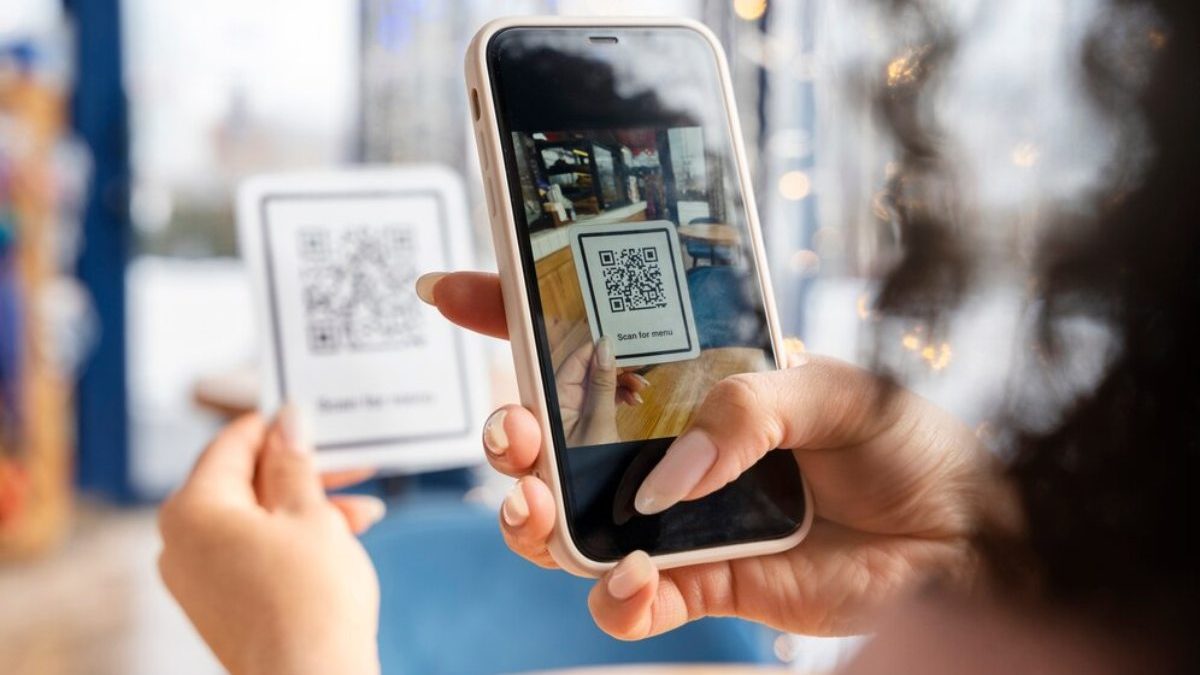QR codes, short for “quick response” codes, have become increasingly popular as a simple way to encode information that can be quickly scanned and interpreted. At their most basic, QR codes are two-dimensional barcodes that can store website URLs, text, contact information, calendar events, and more. When scanned using a smartphone camera, the QR code directs the phone to take a specific action, like opening a website or adding a contact.
Table of Contents
QR codes come in two main forms: static and dynamic.
Static QR codes contain information that doesn’t change once the code has been generated. For example, a QR code on a product package or advertisement that consistently links to the same website is a static code. These codes are highly convenient for conveying permanent information that doesn’t need updating. You can utilize a free online QR code generator to input your desired URL, text, etc., and download the resulting image to create a static QR code.
Dynamic QR codes are powered by code generation software and contain information that can change over time. For instance, a restaurant could have a dynamic QR code on its takeout menus that brings customers to that day’s specials. Dynamic codes can also track analytics, allowing companies to see how often and when their codes are being scanned. Dynamic QR codes require a paid subscription service but provide greater adaptability and insight than static codes.
Use Cases for Static QR Codes
Static QR codes have many versatile uses across industries. Here are some of the most common applications:
- Product Packaging – Appliances, electronics, foods, cosmetics, and more frequently have QR codes on packaging that link to product information. Scanning these saves customers time looking up specs and details online.
- Business Cards – QR codes on business cards can store contact details, eliminating the need for manually adding information to your address book.
- Advertisements – Static QR codes on ads, billboards, magazines, and other marketing materials directly send people to your website, social pages, or promotions.
- Event Ticketing – QR codes can store ticket information and scan attendees into concerts, conferences, and other events for easy, contactless entry.
- Information Sharing – Museums, parks, schools, and similar locations use QR codes to conveniently provide visitors with more details about exhibits, features, history, and more.
- Payments – Some payment services utilize QR codes for quick checkout.
- Customers scan a static code to open the payment page and complete transactions.
Powerful Applications for Dynamic Codes
While static codes offer simplicity and versatility, dynamic QR codes unlock additional capabilities:
- Updating Content – Dynamic codes can change in real-time, ensuring people access the most up-to-date information consistently. This is useful for menus, events, and inventory that frequently changes.
- Analytics – Dynamic QR codes can track valuable metrics like scans, locations, and timing that static codes can’t provide. Businesses can see how effective their codes are.
- Personalization – Codes can pull data to display customized content for each scanner, like targeted special offers for loyalty members.
- Authentication – Bank accounts, facilities, and secured digital spaces can leverage dynamic codes to change and verify access credentials continually.
- Payments – Dynamic codes support secure and customizable mobile payments. Transaction details can be updated with each purchase.
While static QR codes meet many basic information-sharing needs, dynamic codes provide advanced functionality that evolves alongside your changing business needs.
QR Code Use Continues Growing
QR codes have existed for over 25 years but recently reached mainstream popularity and use. What fueled this expanded adoption? Smartphones with quality cameras and QR scanning ability are now ubiquitous for consumers. QR codes provide affordable, straightforward mobile integration for businesses without complex app development.
But QR codes don’t seem to be fading as just a pandemic-era fad where touchless interactions were prioritized. Their versatility and convenience cement their role as a lasting technology.
Industry observers project global QR code use to reach over 5 billion scans by 2025 as adoption by both businesses and consumers continues expanding. And QR code innovation moves forward, too. Enhanced QR codes and camera reading software provide improved scan reliability and speed. Dynamic code generators gain capabilities like full analytics.
QR codes’ journey from warehouses to mainstream applications reflects their flexibility to adapt alongside technological advances. Their benefits over older barcode formats will continue powering this growth.
Conclusion
QR codes began as a solution for tracking inventory but have evolved into a versatile data storage and transmission method.
Static and dynamic QR codes are essential and complementary in linking physical and digital experiences. While QR codes have recently reached broader popularity, their flexibility and convenience for businesses and consumers point to continued expansion possibilities as tech progresses.
With a simple point-and-scan, QR codes build efficient bridges between analog and virtual worlds. Their benefits will continue powering innovation in digitally sharing, tracking, and updating information.

